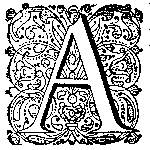The Language of the Sea: Flags and Identities in Early Modern Dutch Marine Painting
DOI:
https://doi.org/10.18352/emlc.126Keywords:
naval battles, paintings, vexillology, political identities, diplomacyAbstract
This article investigates the convergence between early modern Dutch marine painting and contemporaneous political identities and diplomatic conventions. It uses the depiction of flags on paintings of naval battles as a lens to query perceptions of national and regional identity as well as international hierarchy. It first introduces the phenomenon of flags on marine paintings and shows how these depictions are not random or ornamental but exhibit patterns and motifs. It then builds on this observation to pursue two further arguments. Firstly, it argues that the configuration of flags on paintings of naval battles resonates with the multi-layered body politic of the Dutch Republic, representing not just the States-General and the Dutch state, but also the towns, provinces, and admiralties as distinct units. Secondly, the positioning of the flags on paintings show an awareness of debates about international hierarchy and thus a convergence with diplomatic practice. The overall purpose of the article is to underscore the value of flag research, and more generally of crossover research between the disciplines of New Diplomatic History, art history, and vexillology.Downloads
Download data is not yet available.

Published
14-06-2020
Issue
Section
Article
License
Copyright (c) 2020 David Onnekink

This work is licensed under a Creative Commons Attribution-NonCommercial 4.0 International License.
How to Cite
Onnekink, D. (2020). The Language of the Sea: Flags and Identities in Early Modern Dutch Marine Painting. Early Modern Low Countries, 4(1), 1-34. https://doi.org/10.18352/emlc.126





